Pattern Recognition #301 - Pauper
Features Opinion Pattern Recognition
berryjon
19 October 2023
264 views
19 October 2023
264 views
Hello Everyone! My name is berryjon, and I welcome you all to Pattern Recognition, TappedOut.Net's longest running article series. Also the only one. I am a well deserved Old Fogey having started the game back in 1996. My experience in both Magic and Gaming is quite extensive, and I use this series to try and bring some of that to you. I dabble in deck construction, mechanics design, Magic's story and characters, as well as more abstract concepts. Or whatever happens to catch my fancy that week. Please, feel free to talk about each week's subject in the comments section at the bottom of the page, from corrections to suggested improvements or your own anecdotes. I won't bite. :) Now, on with the show!
And welcome back everyone! Today's article is brought to you by my procrastination in going through the bulk card boxes at my FLGS and backfilling old sets of mine. I really should get down to it, but I just keep delaying and delaying. I'm sorry!
But enough of apologies. Let's talk this week's subject. Pauper.
Pauper, as a format, began long before anyone made it official. However, despite this, the definition behind it has been pretty much the same since it's inception. What if you played with all those other cards? To be more specific, I have observed two... let's call them intersecting development paradigms that lead into the existence of Pauper.
The first and most common in my view is that of a self imposed challenge. To better understand this, I want you to go grab a deck right now, and it doesn't matter what format you are playing in (but if said deck was meant for Pauper, shame on you for cheating), and separate the cards by rarity. Look how many Mythics and Rares you have, and even the uncommons, and put those away. Then drop out the basic lands. How many cards do you have left? A quarter of what you started with, maybe?
What if you built a deck with just those cards? Could you? This is the challenge. Take the core of a deck you have ripped all the rares and uncommons out of, and fill in the gaps with other cards of lesser rarity. You still have the same deck, it's just lesser in some ways. Not worse, but different. This is the challenge that people imposed upon themselves. To build a deck with just the commons in their collection.
The other source is one that I find to have happened, but far less commonly (yes, I know, the puns, they burn. Get used to it). People would go to drafts or sealed events and build their best decks. But what about the rest? What about the draft chaff that wound up in the garbage afterwards? I can tell you, having worked in an LGS for 10 months, that I would find a lot of such cards in the garbage after FMN Draft.
But the convergence is pretty easy to see. Build a deck with the cards you aren't using. Cards that maybe have better versions at higher rarities, or just to challenge yourself. Pauper thus began life all across Magic's fandom as one of a myriad of what we call Kitchen Table formats. These are casual, ad hoc things, more for people's personal enjoyment than any sort of organized play.
And so when MTGO began life, because of the nature of that service, Pauper also migrated to there. I can't say how or why, as I skipped out on that part of Magic's history for the most part, but it just seemed natural that a place where you can play essentially freeform would incorporate a communal, if not a Community format.
Now, Wizards did recognize the validity of Pauper, and gave it official recognition in allowing it to count towards their standards and rankings. There was, if my reading is correct, some shakeup in 2017 when Wizards reorganized MTGO's Leagues and dropped Pauper for part of the year before reincorporating it. Personally, looking it over, it seemed like when that happened, Pauper was a second-line format to get re-introduced, and Wizards wanted to make sure the first line formats got rolling before going back to other community favorites.
However, the consistent support for the format in MTGO saw a degree of backwards development. Not that the format was devolving, but rather it was moving back towards a paper format, with actual physical cards. Which caused some degree of confusion as MTGO had certain digital reprint sets that had cards at common there that weren't in paper. And the converse - legal in paper, but not in digital. So by 2019, Wizards formally merged the Digital and Paper Pauper formats, allowing a card that was printed in common in either version to be legal.
Anyone from that era, please feel free to chime in in the comments below.
Then, in 2022, Wizards created the Pauper Format Panel, an advisory group to Wizards to help maintain the health of the format and to ensure that there is communication between the players of the format and Wizards' Play Design group via Gavin Verity. This renewed focus on making sure that the commons of each set are more than just throwaways to pad out packs in favor of the Mythic (Rare) bombs in each set is something that I can appreciate. This group advises Wizards on potential bannings and unbannings, and in general is one of Wizards clear wins in my opinion.
Pauper is a format that utilizes the same base cards as Legacy and Vintage - which is to say that any set, any printing is allowed in the game so long as it was printed at Common at some point. In this, Pauper is sometimes called Legacy Lite by people under the mistaken impression that because you're just limited to commons, the format isn't as powerful as Legacy itself is. It's more of a 9/10 in terms of power there.
In fact, let's roll out some examples of cards that are really good in Pauper and see what they work in.
While nominally an Uncommon, this card was given a common printing in Double Masters 2022, and it immediately took center stage in a lot of mono decks. In fact, the combination of Haste and Prowess makes it a must-include in any sort of Burn or spellslinger deck as its cheap cost means that you're not taxing your mana base to put something out. And remember, Lightning Bolt is also a Common, meaning that for 2 mana, you can deal 5 damage to something in a single turn - including the opponent's face.
I remember last year how people were worried about this downshift in rarity, but people got used to it after a while. It was a nice card, yes, but RDW didn't need it to be good, It was just a useful tool.
Another card with only a single common printing, this time from Shards of Alara. All other printings have been at Uncommon. This card is one of the best graveyard hate cards in the format, and while it shares this degree of usefulness with Nihil Spellbomb, the latter requires as an activated ability to draw the card, whereas the Relic is totally generic, meaning it can fit into any deck without needing to adjust the mana base. And hey, free card draw too!
And this is why that card gets so much play. Delver is still a viable mechanic in this format, and having a 5/5 on the table for cheap is something that requires dedicated responses to deal with. But after a game full of hand disruption and removal, as a late game finisher, very little can stop this creature despite lacking any form of evasion or protection. Ideally there will be nothing left to threaten it.
Because Pauper uses the Legacy/Vintage card lists, with just rarity being considered, I feel it necessary to point out this card has never received a Standard or even a Modern printing, instead being a Commander Preconstructed deck staple since 2016, as well as showing up in some Masters sets. This very simple card not only provides a source of mana if you just play it straight, but it also has Basic Landcycling. You see, one of the weaknesses of Pauper decks is in their mana fixing. Without the solid repertoire of Rare Dual Lands, you are stuck with simple dual lands that always enter the battlefield tapped. Of these, the Artifact lands such as Drossforge Bridge or the Snow Lands of Ice Tunnel. In fact, these two duals also have basic land types, meaning that some basic (but not Basic) land fetches can get them.
But Ash Barrens fixes that, pun intended, in all colours. Yes, it slows you down a turn, but in exchange, you can ensure you have proper mana fixing for your colours. Which can be very important, depending on how things progress. Good card!
Despite the image used showing a Rare symbol, this card is in fact a Common. I like this printing! Printed in Modern Horizons, this card has the ubiquitous notoriety of being a spell designed to counter not only a whole archetype, and to be viable in a specific other format. To be more specific, it is a counter-Storm spell.
Storm and Spellslinger decks in any format, not just Pauper, relish in firing off as many spells in a turn as they can, driving up the damage they can fire off thanks to all their Prowess Triggers (Hi Swiftspear!) or through an absurd Storm count (Hi Scattershot!). Weather the Storm is the counter to this, as it, and all its copies resolve before all the damage comes down, meaning that you can come ahead of the lifegain race. Or you could synergize the repeated life gain with effects that trigger off such things in or .
And these are just a few of the amazing cards in this format! The existence and viability of this format is one of the things that I will cheerfully and repeatedly pound on the table about. That you don't need to be so focused on the rares as the only things worth playing. That you can create Commons (and Uncommons) that are not only interesting, but viable and powerful in their own right. Hell, Up the Beanstalk is one of the most played and desired cards out of Wilds of Eldraine despite being just an Uncommon, while Not Dead After All is a common that is seeing huge amounts of play thanks to being redundancy for Feign Death in Evoke decks!
Pauper is proof that the Rare-obsessed players and design for Magic are wrong, and it's something I wish could be hammered home more often. That Mark Rosewater's line about how "Restrictions Breed Creativity" is absolutely true, and Pauper is a restriction that far too many people refuse to take.
Take it. Take the chance. Do something amazing and different. And take the lessons you learn in Pauper back with you to other formats. They're just as important, if not more so there. Mana fixing. Spell efficiency. Threat assessment. What to do when you don't have your perfect response in hand. Mechanics or options that you just never considered before. Pauper can make you a better player for it.
Thank you all for sticking with me this week! Join me next week when I talk about something different. What it is, I don't know yet.
Until then, please consider donating to my Pattern Recognition Patreon. Yeah, I have a job (now), but more income is always better, and I can use it to buy cards! I still have plans to do a audio Pattern Recognition at some point, or perhaps a Twitch stream. And you can bribe your way to the front of the line to have your questions, comments and observations answered!
SteelSentry says... #2
Love some Pauper love. I'd like to shout out Ash Barrens as well for pairing nicely with Brainstorm in much the same way fetch lands do in Legacy
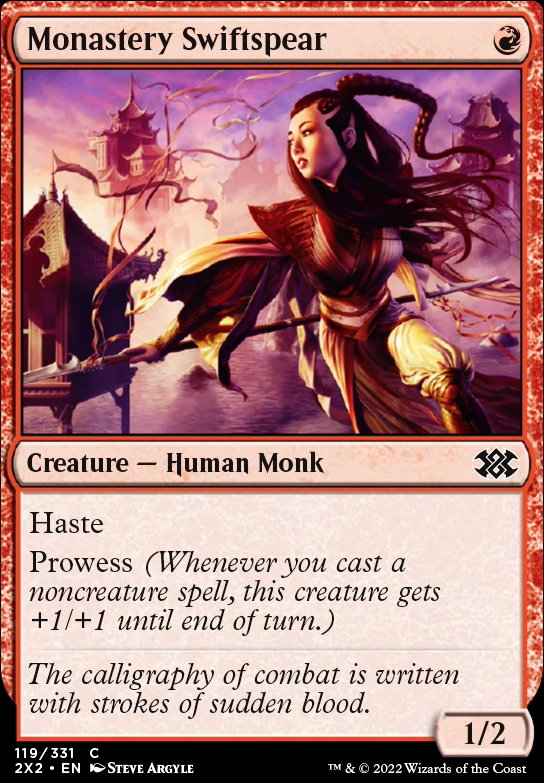
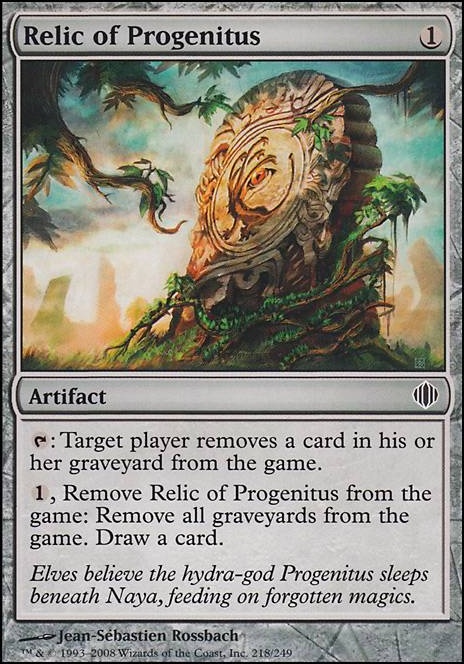
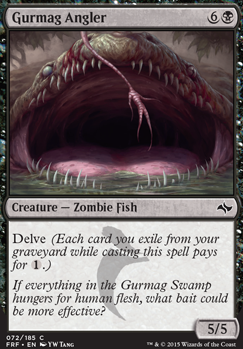
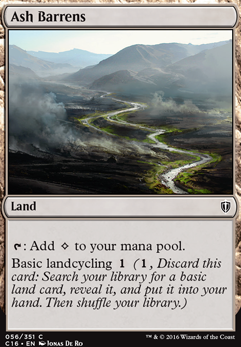
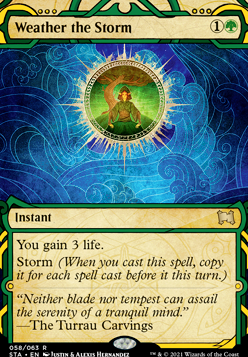
PauperPundit says... #1
Loved your article - I highly recommend pauper to anyone I can, since it can be good clean fun and decks cost as little as $15!
October 20, 2023 1:25 a.m.